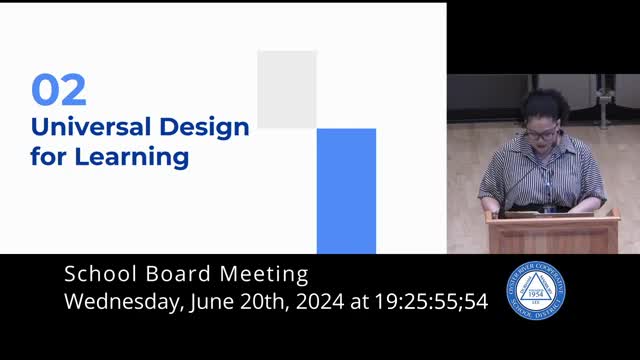Universal design revolutionizes learning for all students
June 21, 2024 | Oyster River Coop School District, School Districts, New Hampshire

This article was created by AI summarizing key points discussed. AI makes mistakes, so for full details and context, please refer to the video of the full meeting. Please report any errors so we can fix them. Report an error »

During a recent government meeting, discussions centered on the concept of universal design, highlighting its significance in both physical spaces and educational environments. Participants shared various examples of universal design, emphasizing features such as ramps and curb cutouts, which facilitate access for individuals with disabilities and benefit a broader range of users, including those with luggage or parents with strollers.
The conversation transitioned to Universal Design for Learning (UDL), an educational framework aimed at providing all students with equal opportunities to succeed. UDL emphasizes that barriers to learning often stem from the design of the learning environment rather than the students themselves. This approach is grounded in brain science and evidence-based educational practices, leveraging digital technology to enhance learning experiences.
Key takeaways from the meeting included the importance of designing inclusive environments that accommodate diverse needs, reinforcing the idea that thoughtful design can significantly impact accessibility and learning outcomes for all individuals.
The conversation transitioned to Universal Design for Learning (UDL), an educational framework aimed at providing all students with equal opportunities to succeed. UDL emphasizes that barriers to learning often stem from the design of the learning environment rather than the students themselves. This approach is grounded in brain science and evidence-based educational practices, leveraging digital technology to enhance learning experiences.
Key takeaways from the meeting included the importance of designing inclusive environments that accommodate diverse needs, reinforcing the idea that thoughtful design can significantly impact accessibility and learning outcomes for all individuals.
View full meeting
This article is based on a recent meeting—watch the full video and explore the complete transcript for deeper insights into the discussion.
View full meeting
